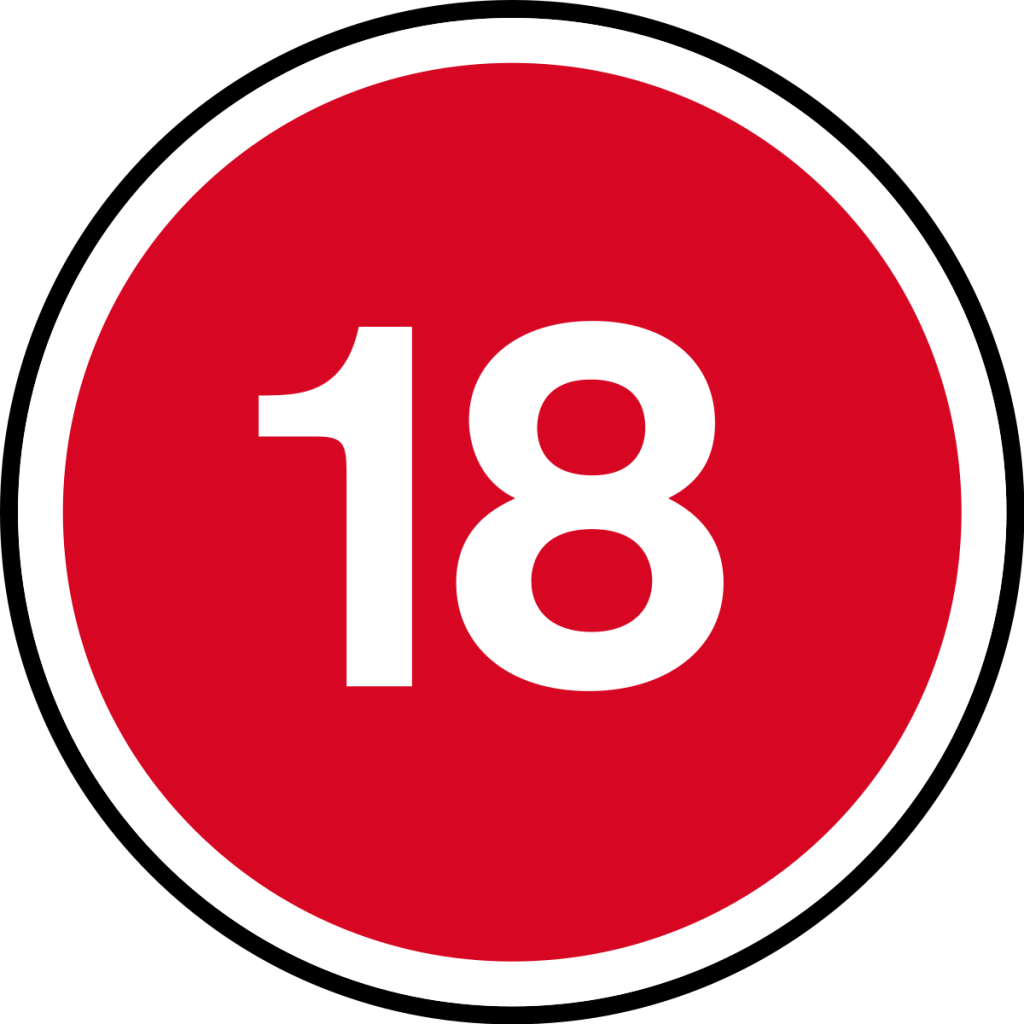BETTING ODDS EXPLAINED: WHAT THEY ARE AND HOW TO USE THEM
Odds are the numbers used by online bookmakers to show how likely something is to happen. They give you a quick indication of how much you could expect to win if your bet wins. This guide will introduce you to the world of odds, the different ways they can be used and what they mean to you and your matched betting journey.
With so many numbers appearing in different formats, betting websites can be overwhelming for the beginner. But as long as you can get to grips with a few simple mathematical ideas, it’ll all become a lot easier. This guide will show you how betting odds work.
What are betting odds?
Odds are numbers that express how likely events are to happen. To illustrate this idea, here are the three possible outcomes of a football match for any team:
1. Win
2. Lose
3. Draw
All of these have different possibilities, probabilities, chances – or odds – of happening.
How betting odds work
Betting odds are usually expressed either as fractions (e.g. ‘3/1’) or as decimals (e.g. 4.0). Fractions were traditionally used to bet on horse racing and were most popular in high street betting shops in the UK, before the advent of internet gambling.
As the web has become more popular as a place to bet, European decimal odds have become more commonplace. Moneyline, or American, odds are favoured by US bookmakers and punters, and are often expressed as positive and negative values (e.g. +250, -400).
While the differences may seem confusing at first glance, they’re simply different ways of expressing the same thing.
How to read betting odds
Once you understand betting odds and the differences between them, reading them becomes easy.
How to understand fractional odds
If a bookmaker offers odds of 3/1 for an event to occur, you stand to win £3 for every £1 you bet. If you bet on an event at odds of 7/2, then you stand to win £7 for every £2 you wager (winnings plus your stake).
You may also see odds expressed with the lowest number first e.g. 1/2 or 2/7. These are known as ‘odds-on selections’ and are normally used when the likelihood of something happening is higher than not. Of course, this also means that your winnings will be less than your stake. At 2/7 you win £2 for every £7 you bet.
When the numbers on either side of the slash are the same (e.g. 1/1), we refer to them as ‘evens’.
If you’d like a bit more guidance, we have a full guide on how fractional odds work in betting.
Understanding decimal odds
In many ways, decimal odds are easier to understand. This is because all you have to do to calculate your potential winnings is multiply your stake by the odds. For example, if you make a £10 bet at odds of 4.5, you could potentially win £45 (including your stake).
By contrast, fractional odds can become confusing. For example, which odds give the best return – 16/5 or 3/1? You can work it out, but a glance at their decimal equivalents (4.2 and 4.0 respectively) quickly tells you which odds are most favourable. This is why we recommend that all beginners start betting using decimal odds.
You should bear in mind that decimal odds include your stake. So, if you bet £10 at odds of 2.5, you can expect to win £25 (£15 on top of your £10 stake). You should also know that 2.0 is the evens line, so numbers lower than this return a profit that is lower than your stake.
Moneyline odds (also known as American odds)
Moneyline odds aren’t generally used in either the UK or Europe. But you might see them in American media and sites, especially those that cover boxing or mixed martial arts.
Moneyline odds use $100 as the evens line, with either positive or negative outcomes. So, if you have odds above the line, this tells you how much you profit you stand to make from a $100 bet. For example, if you put your money down at odds of +175, you can expect to make $175 profit from a winning bet.
If you the odds have a negative value, this tells you how much money you need to wager to win $100. So, if you want to bet on an event at odds of -175, you must bet $175 to win $100.
Converting decimal odds to fractions (and vice versa)
To convert decimals to fractions, subtract 1 from the decimal and find the nearest whole integer. So, if you have odds of 4.5, this becomes 3.5/1, which you can turn into 7/2 by multiplying both sides by 2. To convert fractional odds into decimals, divide the first number by the second and add one, e.g. 7/2 +1 = 4.5.
Odds Converter
Using odds to find value
Now that you can convert odds into the perceived value, it means that you can work out whether you think the bookmakers’ implied probability of an event occurring differs from your own.
For example, if you notice that Chelsea has scored a first half goal in 75% of their home games this season but the bookmaker has the market priced at 2.0 (50% implied probability) then you’ve just found some value.
The problem with this method though, is that you need to be better than the bookmaker at calculating probability. This is a difficult task considering the huge teams of mathematicians that they employ.
What is probability?
In betting terms, probability is odds expressed as a percentage. To help you understand probability, think of a coin toss: in this case, there are only two outcomes (usually heads or tails), each with exactly the same chance of landing. You calculate the probability with the following equation:
Probability = chances for / total chances
For every coin toss, heads has one out of two chances of landing. One divided by two is 0.5. Multiply by this by 100 to get the percentage, and you have 50%.
In the case of a deck of cards, there are four aces among 52 cards. Therefore, the probability of drawing an ace is 4/52, or 7.69%.
Probability in sports betting
Because of the many factors involved, it is impossible to calculate exact probability in sports betting. All your bookmaker can do is set a probability based on the likely outcome (adjusted slightly for profit); this is known as ‘implied probability’.
Implied probability is important because it helps you decide whether it is worth betting on a certain event. You can work it out by dividing one by the decimal odds. Let’s say the bookies give Stoke City odds of 2.5 (3/2) for winning a match against Huddersfield Town. Divide one by 2.5 to get the probability, which is 0.4 or 40%.
If you put £10 down on Stoke to win, you stand to gain £25 including your £10 stake. You can then work out the ‘expected value’ of the bet using another equation:
(Amount won per bet * probability of winning) – (Amount lost per bet * probability of losing)
In the case of Stoke versus Huddersfield above, the equation works out like so:
(15 * 0.4) – (10 * 0.6) = £6 – £6 = 0
In the above example, you can expect to break even (neither win, nor lose money over time). If the expected value is less than zero, then the bet is of low quality; but the higher the expected value is above zero, the more money you stand to make from the wager over time.
Finding real value in your bets
The issue with betting odds is that they’re always tipped in the bookmakers’ favour to allow them to make a profit. So while the odds that bookies offer do tend to reflect the likely outcome, savvy punters can find the real value in the bet.
Here’s how:
Let’s say you believe the probability of Stoke City winning against Huddersfield Town to be 45% – slightly higher than the bookmakers’ odds suggest. With your £10 stake at odds of 2.5, the equation we used previously gives you the following expected value:
(15 * 0.45) – (10 * 0.55) = 6.75 – 5.50 = 1.25
In this case, the bet represents good value. The issue with this kind of betting is that it is all a matter of opinion. The fact that bookmakers have large teams of maths experts working out odds means that beating them at their own game can be very difficult.
Best Odds
The key thing when it comes to finding value is to look for the best odds on your chosen selection.
It’s quite surprising how much odds can change from bookmaker to bookmaker. This is why it makes sense to shop around. Plus, that gives you the opportunity to take advantage of the bookmakers’ bonuses and earn free cash.
At OddsMonkey we have a tool to help you find the best odds. OddsMatcher finds and analyses odds and then compares bookie against betting exchange. By backing and laying the same selection, you can extract value from bookmakers’ free bets and turn them into real money!
That’s called matched betting, which is what we specialise in helping you with. If you’re interested in learning more, we have a free introduction to matched betting you can download that will explain it all.





